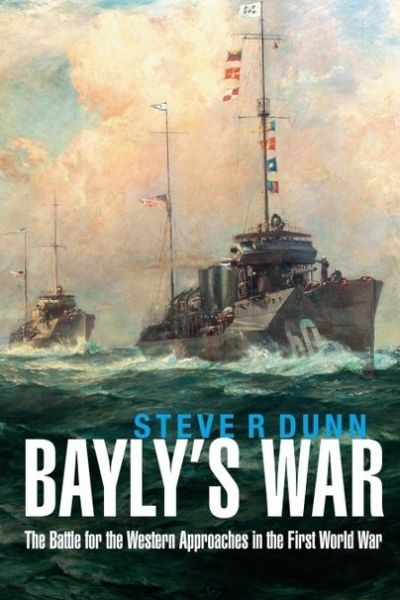Bayly’s War is the story of the Royal Navy’s Coast of Ireland Command (later named Western Approaches Command) during World War One.
Britain was particularly vulnerable to the disruption of trade in the Western Approaches through which food and munitions (and later soldiers) from North America and the Caribbean and ores and raw materials from the Southern Americas, all passed on their way to Liverpool or the Channel ports and London. After the sinking of the Lusitania in May 1915 and the introduction of unrestricted submarine warfare by the Germans, Britain found herself engaged in a fight for survival as U-boats targeted all incoming trade in an attempt to drive her into submission. Britain’s naval forces, based in Queenstown on the southern Irish coast, fought a long and arduous battle to keep the seaways open, and it was only one they began to master after American naval forces joined in 1917.
Vice-Admiral Sir Lewis Bayly was the man appointed to the Coast of Ireland Command. A fierce disciplinarian with a mania for efficiency, and thought by some of his colleagues to be more than a little mad, Bayly took the fight to the enemy. Utilising any vessel he could muster – trawlers, tugs, yachts – as well as the few naval craft at his disposal, he set out to hunt down the enemy submarines. The command also swept for mines, escorted merchantmen and fought endlessly against the harsh Atlantic weather. Relief came When America sent destroyers to Queenstown to serve under him, and Bayly, to the surprise of many, integrated the command into a homogenous fighting force.
Along the way, the Command had to deal with the ambivalent attitude of the Irish population, the 1916 Easter Rising, the attempt to land arms on Ireland’s west coast and the resurgence of Irish nationalism in 1917.
Bayly’s War is a vivid account of this vigorous defence of Britain’s trade and brings to life the U-boat battles, Q-ship actions, merchant ship sinkings and rescues as well as the tireless Bayly, the commander at the centre.
ISBN: 9781526701237
Format: Hardback
Author(s): Steve R Dunn
First Publishment Date: 22 January 2018




